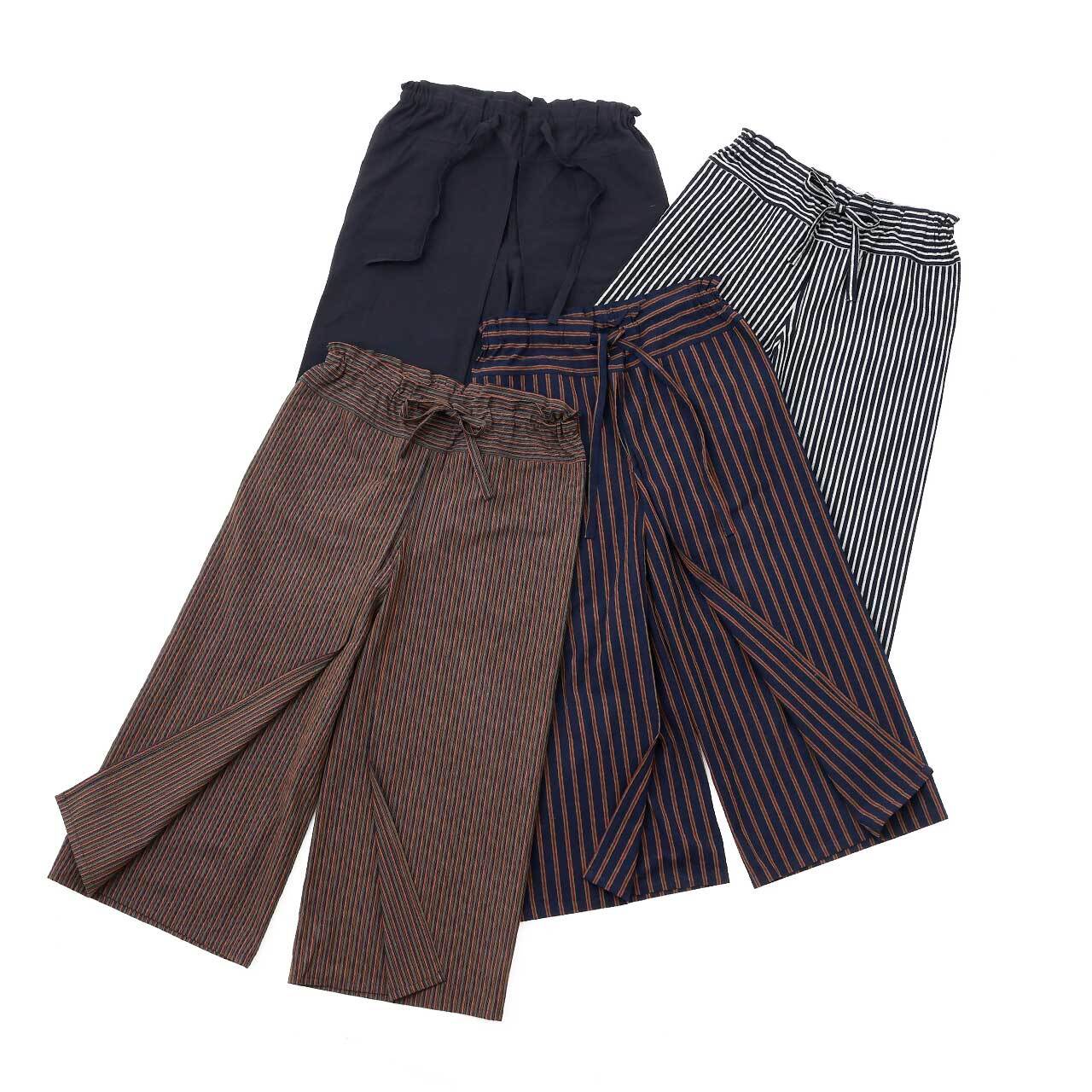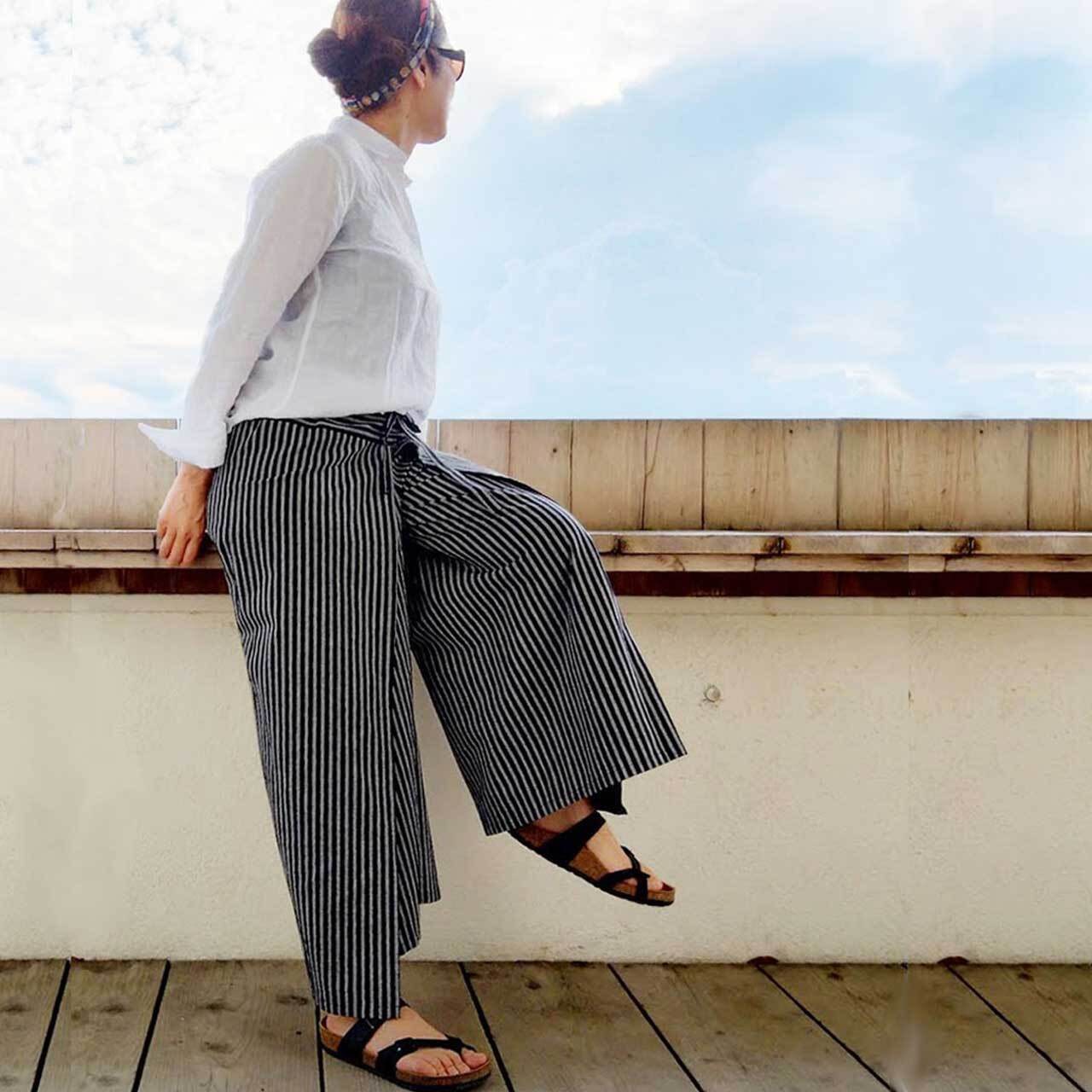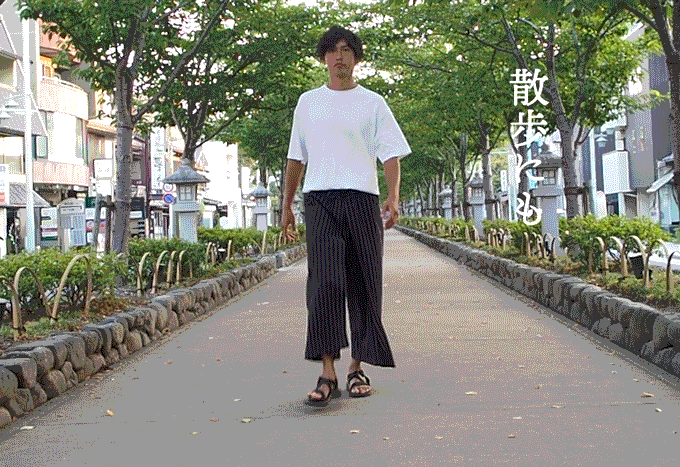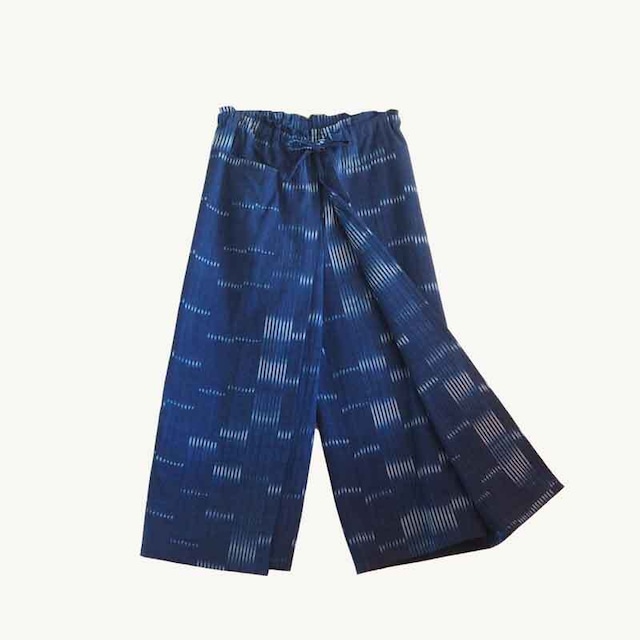Kamedashima : Black Stripe Hakama Pants
Discover Japanese KAMEDAJIMA
Kamedajima, or Kameda Stripes, originated in the Edo Period in the 9th year of the Genroku Era, in 1696, and was created in Kameda, Niigata Prefecture, in order to help support the livelihoods of the townspeople.
Kamadejima was developed by the farmers of the Kameda region in Niigata Prefecture.The town of Kameda was originally a marshland that was known as Ashinuma, and it had water that came up to your waist, and was a tough area to farm in. During the Edo Period, during the winter months, where farming had a lull, people in the area started to produce cotton textiles. Kameda is the most northern cotton producing area of Japan, and these clothes helped to support the farmers during the hard farming work that they did, and were rather resistant to water and dirt.
The production of rice and farmers’ life in Kameda
The cotton that was produced was transported to the town, and then sold through wholesalers as Kameda Cotton Textile.Kamedajima had its peak from the end of the Meiji Period to the Taisho Period, 1870-1920, and by the end of the Taisho Period, there were over 600 weavers in the area, and were sold in Hokkaido and the Tohoku area. However, entering the Showa period (1926-1989), it faced a sharp decline, and during the years of WW2 it was difficult to obtain cotton yarn, so cheaper foreign fabrics were imported, and the era of Kamedajima faced its end.
In 2002, Kamedajima cloth and sample books were discovered, and the two remaining Kameda weavers looked to revive the production of Kamedajima to that of the Edo period. After about 50 years of decline, the fabric has started to rebound, and today they sell over 350 different types of stripes.
Kamedajima: Passing on Japanese Tradition
Kamedajima is produced all in house, from the weaving and warping of the fabric, to the inspection of the fabric, which is all done by hand and eye to check. Vertical stripes are an auspicious pattern which is used to celebrate events. It was a way for people of old to wish for the continued happiness of someone. We carry on this traditional weaving pattern to do the same.

The pants are sewn at a factory with high-technology equipment, that also handles outdoor garments and clothes for domestic high-end brands. First a pattern is created with CAD, the fabric is cut, ironed, and finally it is carefully sewn.


なら 手数料無料の 翌月払いでOK
Partner producers
◎Fabric:Kamedajima Edo Stripe
https://edostripe.com/
Kamedajima is a registered trademark of Kameda Textile Cooperative
登録商標第5661445号
◎Sewing Factory: Hitec Co., Ltd. (Saitama/Iwate)
[Material] Cotton
[Country of origin] Japan for both fabric and sewing
Discover Japanese KAMEDAJIMA
Kamedajima, or Kameda Stripes, originated in the Edo Period in the 9th year of the Genroku Era, in 1696, and was created in Kameda, Niigata Prefecture, in order to help support the livelihoods of the townspeople.
Kamadejima was developed by the farmers of the Kameda region in Niigata Prefecture.The town of Kameda was originally a marshland that was known as Ashinuma, and it had water that came up to your waist, and was a tough area to farm in. During the Edo Period, during the winter months, where farming had a lull, people in the area started to produce cotton textiles. Kameda is the most northern cotton producing area of Japan, and these clothes helped to support the farmers during the hard farming work that they did, and were rather resistant to water and dirt.
The production of rice and farmers’ life in Kameda
The cotton that was produced was transported to the town, and then sold through wholesalers as Kameda Cotton Textile.Kamedajima had its peak from the end of the Meiji Period to the Taisho Period, 1870-1920, and by the end of the Taisho Period, there were over 600 weavers in the area, and were sold in Hokkaido and the Tohoku area. However, entering the Showa period (1926-1989), it faced a sharp decline, and during the years of WW2 it was difficult to obtain cotton yarn, so cheaper foreign fabrics were imported, and the era of Kamedajima faced its end.
In 2002, Kamedajima cloth and sample books were discovered, and the two remaining Kameda weavers looked to revive the production of Kamedajima to that of the Edo period. After about 50 years of decline, the fabric has started to rebound, and today they sell over 350 different types of stripes.
Kamedajima: Passing on Japanese Tradition
Kamedajima is produced all in house, from the weaving and warping of the fabric, to the inspection of the fabric, which is all done by hand and eye to check. Vertical stripes are an auspicious pattern which is used to celebrate events. It was a way for people of old to wish for the continued happiness of someone. We carry on this traditional weaving pattern to do the same.

The pants are sewn at a factory with high-technology equipment, that also handles outdoor garments and clothes for domestic high-end brands. First a pattern is created with CAD, the fabric is cut, ironed, and finally it is carefully sewn.


Partner producers
◎Fabric:Kamedajima Edo Stripe
https://edostripe.com/
Kamedajima is a registered trademark of Kameda Textile Cooperative
登録商標第5661445号
◎Sewing Factory: Hitec Co., Ltd. (Saitama/Iwate)
[Material] Cotton
[Country of origin] Japan for both fabric and sewing
ショップの評価
Partner producers
◎Fabric:Kamedajima Edo Stripe
https://edostripe.com/
Kamedajima is a registered trademark of Kameda Textile Cooperative
登録商標第5661445号
◎Sewing Factory: Hitec Co., Ltd. (Saitama/Iwate)
[Material] Cotton
[Country of origin] Japan for both fabric and sewing























 とは?
とは? 


